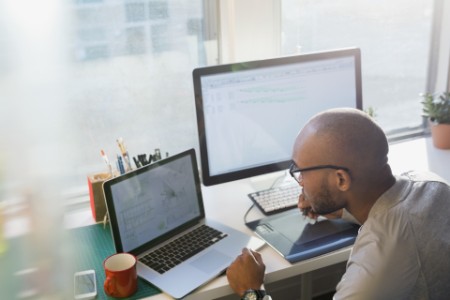Instituting a secure remote work environment
To effectively combat risks, establishing a robust security framework as an interplay of people, processes, and technology becomes paramount.
C-suite involvement in aligning digital priorities, the efficacy of internal risk mitigation programs as well as the deployment of the right technological toolsets can potentially become some of the strongest weapons in a company’s arsenal.
According to the EY-ACFE survey, emerging technologies such as artificial intelligence (AI) and machine learning (ML) (37%), fraud data analytics (35%), real-time threat intelligence and endpoint security solutions (29%) are driving digital transformation within compliance, risk and legal departments. Combating risks emanating from bribery and corruption in WFH models can be addressed by implementing employee monitoring solutions, such as internet activity and email monitoring, social media and message tracking, and file transfer tracking to help track dubious employee behavior.
Moving toward a zero trust security model is another effective way to stop cyberattacks right at their source. The zero-trust model is based on the ‘trust none, verify all’ approach that helps to build a more secure environment at work. The two most critical components of this security architecture are identity authentication for access to work devices and network access control management, which can often get compromised in the regular course of working.
Companies can also consider modifying their BYOD policies to better combat risks surrounding WFH models. Employees that are allowed to use personal devices for work can be exposed to several security threats, such as malware infections, leading to data leakage and unauthorized access to data. Company-provided devices can be customized according to an organization’s security controls, while personal devices cannot be monitored at the same level. This can expose the company to a plethora of security risks.
Enabling multi-factor authentication (MFA) in all apps and accounts with confidential information is key to creating a cyber-safe work environment. MFA is an authentication system that validates user identity using two or more distinct methods, rather than just a username and password combination. It protects enterprises against identity theft, cyberattacks, and data breaches by preventing unauthorized access to apps and sensitive data.
Regular security training to employees is as important as the deployment of any technological tool or firewall. Employees are a company’s first line of defense and should be made aware of their role in safeguarding the company’s data.


